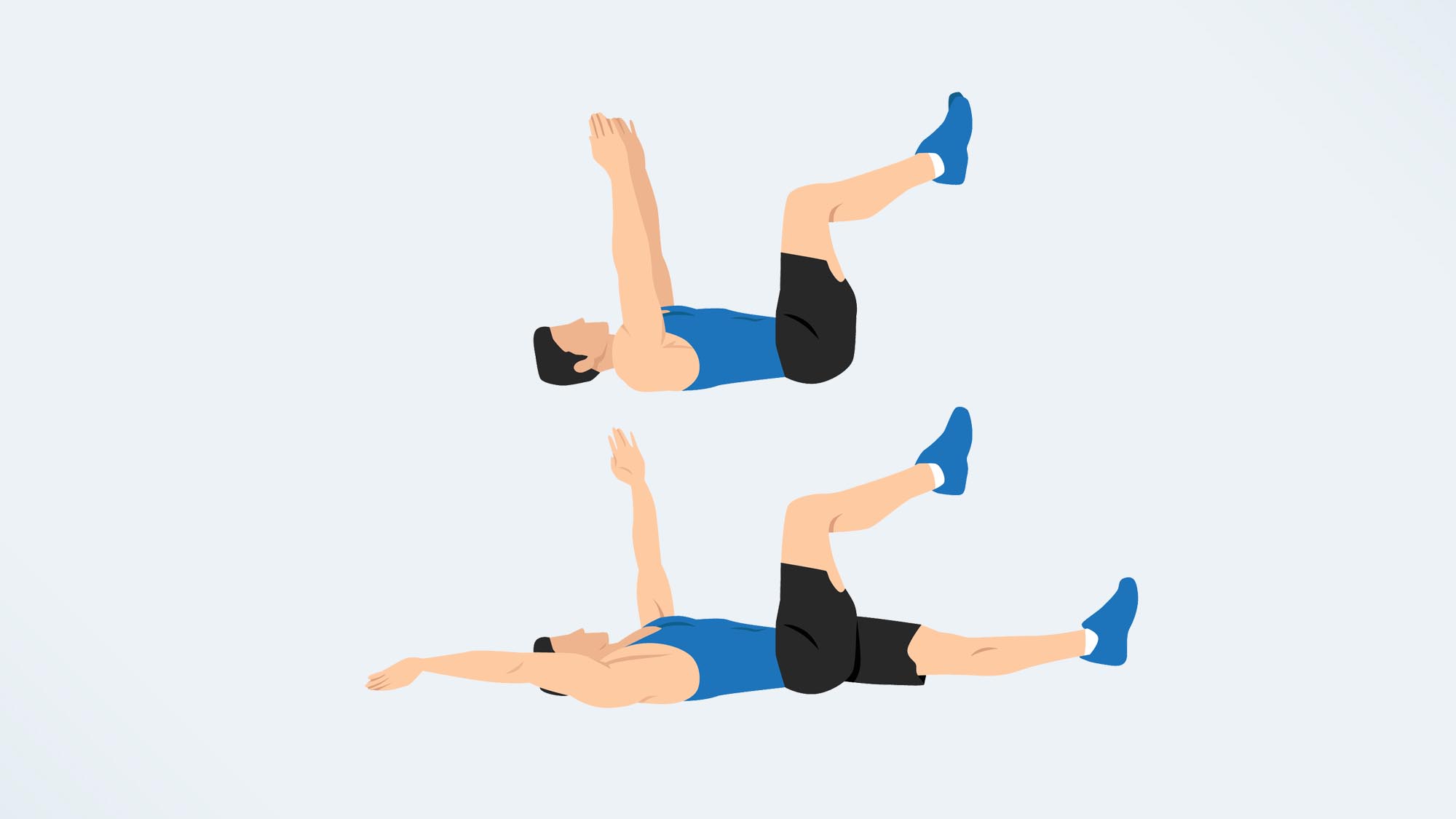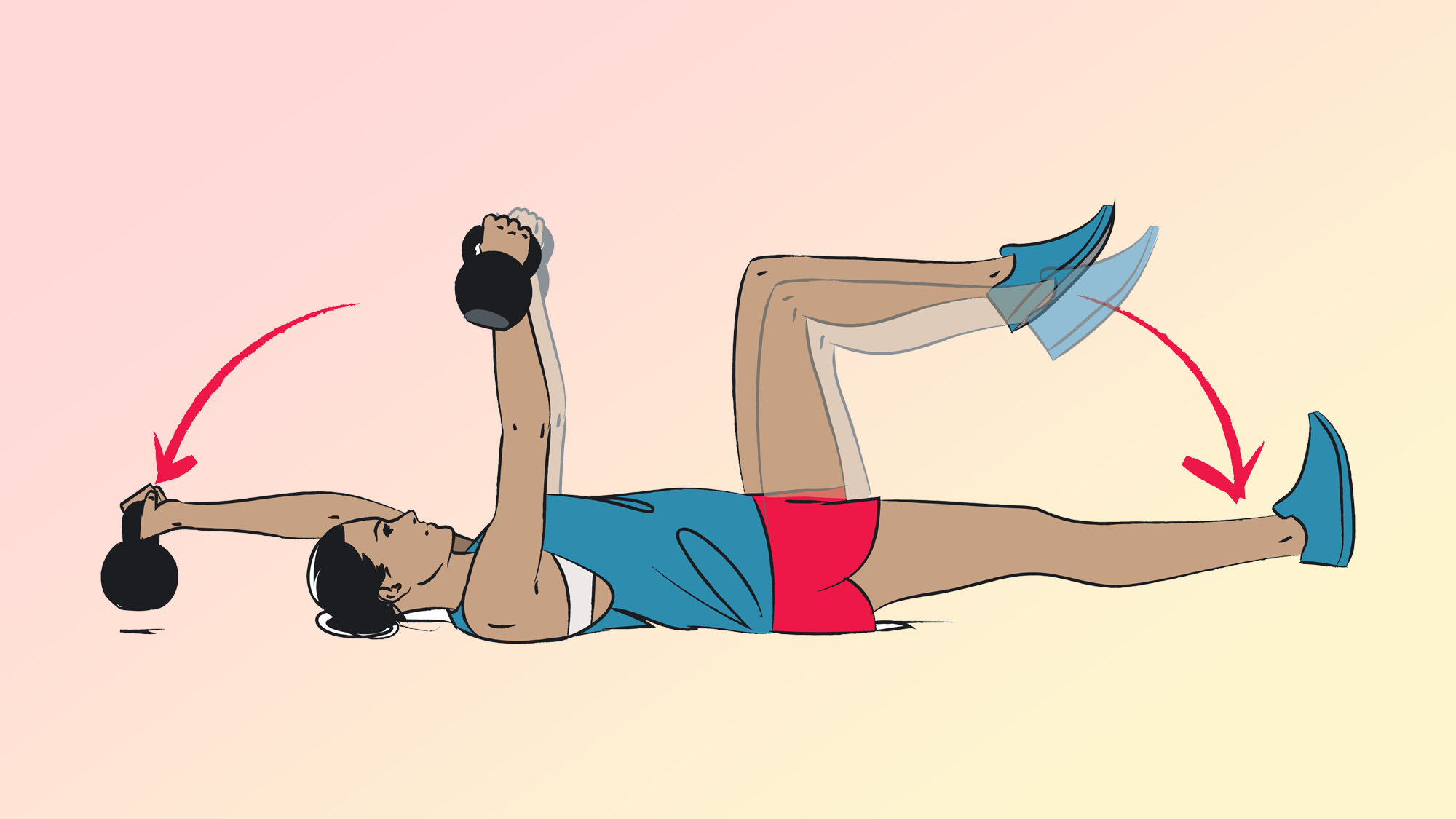I did 3 dead bug variations every day for a week — here’s what happened
Is the dead bug the secret to a stronger core?

When working your abdominal muscles, not all exercises are created equal — forget sit-ups and planks, one of the best ab exercises for targeting the deepest core muscles — the transverse abdominis, a belt of deeper core muscles — is the dead bug. It's a stabilization exercise, which means dead bugs also target the erector spinae that help stabilize the spine and support the lower back.
Aside from strong abdominals being an aesthetic goal, a strong core can help you run faster, lift heavier, improve your posture, and reduce lower back pain. Dead bugs are a fantastic ab exercise for beginners and more experienced gym-goers alike as they are less likely to put pressure on your spine or lower back. Dead bugs also work on the body’s contra-lateral limb engagement — teaching the body to move opposing limbs simultaneously while keeping the core and back stable.
As always, if you’re new to exercise, or you’re returning to exercise following an injury, it’s a good idea to check your form with your personal trainer to ensure you’re moving correctly. For more information, here’s how to do a dead bug with perfect form.
The dead bug is one of my favorite exercises when it comes to working my core — I suffer from lower back pain and find the dead bug puts less pressure on my spine than planks and sit-ups. I’ve done 100 dead bugs a day for a week, as well as weighted dead bugs every day to target my core, but to really take a deep dive into the move, I added three dead bug variations to my routine for a week. Read on to find out what happened.
Let’s start by looking at the three dead bug variations:
Bodyweight dead bugs

- Start by lying on your back with arms straight above you, and your knees in a tabletop position.
- Slowly lower your right arm to a couple of inches off the floor behind your head; as you do so, stretch your left leg away from your body and lower that to just above the floor.
- Pause, then return to your starting position and repeat on the opposite side.
- Make sure you keep your lower back pressed into the mat for the entire exercise — to do this, think about sucking your belly button into your spine.
Weighted dead bugs

For weighted dead bugs, you’ll need a set of dumbbells — if you’re still working out from home, here are the best adjustable dumbbells to buy.
- To do a weighted dead bug, follow the steps above, but hold a dumbbell in each hand.
- It’s a good idea to start with a lightweight set of dumbbells, as like with a bodyweight dead bug, you want to avoid arching your back during this exercise.
Double arm dead bug
For this variation, you’ll need one dumbbell or a kettlebell. It can be the same weight as the dumbbell used for the weighted dead bugs, or slightly heavier.
Sign up to get the BEST of Tom's Guide direct to your inbox.
Get instant access to breaking news, the hottest reviews, great deals and helpful tips.
- Start in a tabletop position, with your lower back pressed into the exercise mat, holding a dumbbell in two hands.
- Slowly stretch your left leg out away from your body and lower that to just above the floor, at the same time, lower your arms back behind you, taking the dumbbell a few inches off the floor.
- Return to your starting position and extend the right leg out away from your body.
- Keep alternating legs.
I did 3 dead bug variations every day for a week — here’s what happened
Day one
On the first day of this challenge, I opted for 20 reps of each variation, so 60 dead bugs in total. By the end, my core was shaking and my abs were on fire — this was going to be a long week.
It’s worth caveating on day one that no personal trainer would encourage you to work abs every single day — your body needs time to recover between workouts. I consider myself to be relatively fit, and my normal fitness routine involves four runs a week, and three strength sessions, including weights and Pilates.
Days two and three
On days two and three, I kept the weight the same, using two 3kg dumbbells for the weighted dead bugs, and one 5kg dumbbell for the double arm dead bug, but did three sets of 20 reps, with a minute break between each set. I could really feel my core working hard, and had to slow things down to really focus on my form.
When it comes to selecting the right weight for your workouts, it’s normally best practice to opt for one that feels challenging by the final few reps, without compromising your form. The same applies here, but remember, as with a bodyweight dead bug, the goal is to move slowly and with control, so start off with a much lighter weight than usual to ensure your form is perfect before progressing.
Day four
For day four, I upped my reps, doing 20 on each side for the first two exercises, and 30 double-armed dead bugs. I also made the move harder by really slowing down, pausing at the bottom of the exercise for a couple of seconds — this increases the difficulty of the exercise, but also increases the time spent under tension, working the ab muscles harder.
Day five
On day five, I found myself on the move, without any weights or a gym, so opted for bodyweight dead bugs, used a filled water bottle for the double-armed dead bugs, then used a cushion from the hotel sofa for a separate dead bug variation. For this, start in a tabletop position with your knees bent and your arms raised to the ceiling, and press a cushion or pillow (or exercise ball if you have one) between your knees and arms. Keeping the cushion in place, lower one arm and leg away from your body, keeping the others pressed into the cushion, then swap sides.
Days six and seven
At last, the end was in sight. For the final two days, I opted for 60 reps of each variation, with a short break in between. What did seven more days of dead bugs teach me? I still love this ab exercise, it helps me switch my abs on before heading out for a run, and it allows me to work hard, without putting pressure on my spine.
Of course, there weren’t any visible changes after hundreds of dead bugs — if visible abs are your goal, you’ll need to focus on your fat percentage. As well as exercise, your diet, hormones, sleep, and stress all contribute toward how much body fat you store. Plus, despite what you may have heard, you can’t spot-reduce belly fat, so we recommend reading up on how to calculate your body fat percentage and why it matters here.
More from Tom's Guide

Jane McGuire is Tom's Guide's Fitness editor, which means she looks after everything fitness related - from running gear to yoga mats. An avid runner, Jane has tested and reviewed fitness products for the past five years, so knows what to look for when finding a good running watch or a pair of shorts with pockets big enough for your smartphone. When she's not pounding the pavements, you'll find Jane striding round the Surrey Hills, taking far too many photos of her puppy.
